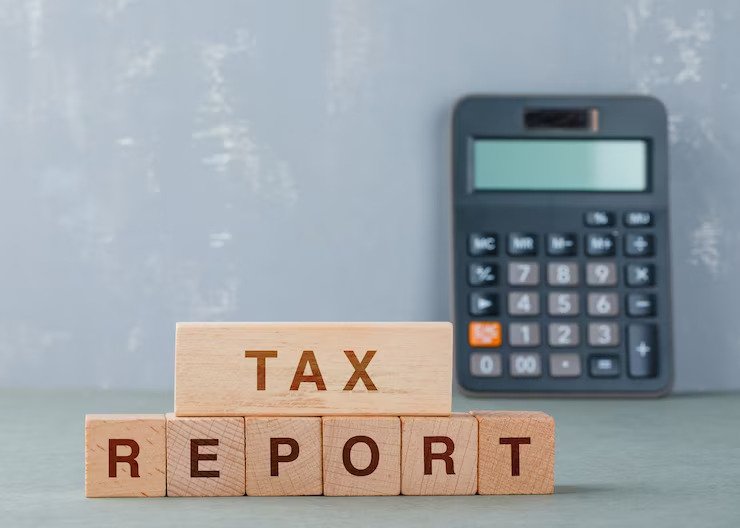Business Deductions And Tax Planning: Two Critical Steps To Save Money

As the owner of a company, doing tax planning is an essential part of sound financial management. Locating and making the most of all available company deductions is one of the most important aspects of tax preparation. Your overall tax liability will go down as a result of the reduction of your taxable income brought about by deductions.
Continue reading to find out about some potential tax write-offs and deductions for your business that you may be overlooking, as well as some suggestions on how you might utilize these opportunities to reinvest in your company.
Understanding Businesses Deductions And Tax Planning Steps
For businesses are costs that are directly relevant to the running of a firm. When calculating your taxable income, these expenditures may be subtracted from the money generated by your firm. Expenses that are regular and essential, as well as those that are considered capital, may be deducted from a business’s income.
1. Locating And Making A Claim For Tax Deductions
It is essential to maintain precise records of your company’s costs to properly identify and account for tax deductions. The Internal Revenue Service mandates that all expenditures must have supporting paperwork and receipts. Knowing which deductions you are eligible to claim is also very important since certain costs could not be deductible at all.
2. Utilize The Available Tax Breaks
The qualifying business income (QBI) deduction allows owners of pass-through businesses to take a deduction equal to up to 20% of their share of the firm’s income. However, this deduction is subject to several regulations and limits and does not come without restrictions.
Figuring out who is eligible to claim the QBI deduction and then determining the amount of the deduction itself is not a straightforward operation. However, the deduction may offer a large tax break for owners of small businesses. If you believe you could qualify for this, you should discuss it with your accountant.
3. Investigate Different Ways To Cut Down On AGI
Your adjusted gross income, often known as your AGI, is a primary factor in determining the taxes that you must pay. For instance, if your adjusted gross income (AGI) is less than $200K, or if you are married, your AGI is less than $250K, then you will not have to pay the extra 0.9 percent in Medical taxes. You may reduce your AGI by the below methods or by lowering your salary:
- For example, by registering a company in the US we can obtain some benefits.
- Making contributions to a retirement plan that postpones paying taxes until later.
- Using the itemized deductions method if your total deductions are more than the standard deduction.
- Making contributions to a health-related savings account
If you have any reason to believe that you will wish to itemize your deductions, you might think about keeping track of them on a spreadsheet throughout the year.
4. Learn To Leverage Tax Credits
Tax credits are an additional method that businesses may use to reduce the amount of tax liability they are responsible for paying. Tax credits, in contrast to tax breaks, which lower the level of cash that is subject to taxation for a person or corporation, reduce the percentage of tax that is actually owed by the taxpayer. It is in the best interest of businesses to benefit from tax benefits. Consider the following few options:
- Credit for work opportunities offered:
- Access credit for the disabled:
- Tax breaks for health insurance premiums paid by employers with less than 25 employees
5. Delay Or Accelerate The Receipt Of Income
When it comes to their financial records and tax filings, many small firms rely on cash. When using this cash method a business records revenue and costs at the time that the corresponding cash transaction takes place. So, it means records are taken when the cash changes hands. This opens up some intriguing possibilities for tax planning tactics.
You could wish to delay receiving income until the next year if you believe that you will be in a reduced tax band the following year.
6. Purchase Assets At The End Of The Year
In certain tax years, it can be helpful to estimate the amount of taxes your company will owe, and then to acquire assets, both new and already used, to lower those estimated taxes.
7. Pay Student Loans Of Workers
Employers are now permitted to provide financial assistance to their workers in the form of student debt repayment via a clause that was included in the CARES Act 2020. This Act contains a condition that permits companies to claim a tax exemption for repaying employee student loans and eliminates it from employee income, which means that workers do not have to pay required taxes on the money.
8. Work With Independent Contractors
If you engage independent contractors or freelancers for any reason linked to your company (for example, taking images of things for your online shop), you can deduct the cost of their services from your taxable income.
Before independent contractors begin working for you, you should always make it a point to gather their 1099 forms and ensure that you file them correctly.
9. Reconsider The Type Of Business Entity
Your choice of business entity has a big influence on the amount of Taxes You Will Owe. People who are self-employed and must pay self-employment taxes include those who operate their businesses as sole proprietorships, limited partnerships, or certain limited liability companies. If you anticipate that your company will owe a significant amount of money in taxes, one solution to this problem is to restructure your company so that it is treated as a different kind of legal organization.
Last Words: Why Is It Important For Businesses To Plan Their Taxes?
You are required to pay taxes as the owner of a company, but the amount that you owe should never come as a complete shock to you. It is crucial to understand how company taxes operate and to make estimations of the amount you need to pay each quarter or year to guarantee that you have sufficient funds.
Tax planning is something that can help you generate correct tax predictions, make all tax forms and reports on time, and avoid the possible ramifications of not doing so. Planning your taxes properly may help you achieve all of these things.
Read Also:
















